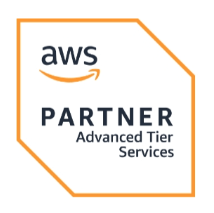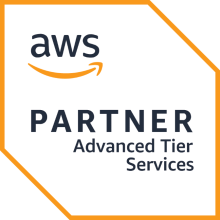Build
AWS Cloud Migration
Elevate Legacy Environments to Cloud-Native
Next-Gen Cloud Strategy and Design
Build High-Performance & Robust Architectures
Cloud Security and Compliance
Fortify Your Cloud Security & Compliance Posture
Innovate
Data Modernization and Analytics
Unlock Powerful Business Intelligence
AWS Application Modernization
Future-Proof Apps for Performance & Scale
Digital Transformation
End-to-End Digitalization & Tech Integration
Kubernetes Acceleration
Simplify Kubernetes Deployments on AWS
AWS Serverless Architecture
Run Apps Without Managing Infrastructure
AI and Machine Learning
Predict Outcomes & Redefine Business Models
Optimize
AWS DevOps and Automation
Streamline & Automate Cloud Workloads
AWS Well-Architected Framework Reviews
Evaluate & Optimize Cloud Environments
AWS Cost Optimization
Manage Cloud Spend & Drive Savings
Managed AWS Cloud Services
Proactive Cloud Management & 24/7/365 Support
Managed IT Services
Round-The-Clock IT Infrastructure Management
Company
About Us
The Cloudelligent Story
AWS Partnership
We’re All-In With AWS
Careers
Cloudelligent Powers Cloud-Native. You Power Cloudelligent.
News
Cloudelligent in the Spotlight

Discover our

Explore our
Insights
Blog
Latest Insights, Trends, & Cloud Perspectives
Case Studies
Customer Stories With Impact
eBooks & eGuides
Expert Guides & Handbooks
Events
Live Events & Webinars
Solution Briefs
Cloud-Native Solution Offerings
White Papers
In-Depth Research & Analysis
Upcoming Events
We’re a Thriving Team of Cloud Champions. Join Us!
At Cloudelligent, you have the perfect opportunity to not only enhance your cloud skills but also support our customers in their unique journeys.

Migrate, Modernize, and Inovate With Our Unparalleled AWS Expertise
Cloudelligent empowers your team to deliver innovation and elevate customer experiences by leveraging our deep expertise in AWS technologies.
Build
AWS Cloud Migration
Elevate Legacy Environments to Cloud-Native
Next-Gen Cloud Strategy and Design
Build High-Performance & Robust Architectures
Cloud Security and Compliance
Fortify Your Cloud Security & Compliance Posture
Innovate
Data Modernization and Analytics
Unlock Powerful Business Intelligence
AWS Application Modernization
Future-Proof Apps for Performance & Scale
Digital Transformation
End-to-End Digitalization & Tech Integration
Kubernetes Acceleration
Simplify Kubernetes Deployments on AWS
AWS Serverless Architecture
Run Apps Without Managing Infrastructure
AI and Machine Learning
Predict Outcomes & Redefine Business Models
Optimize
AWS DevOps and Automation
Streamline & Automate Cloud Workloads
AWS Well-Architected Framework Reviews
Evaluate & Optimize Cloud Environments
AWS Cost Optimization
Manage Cloud Spend & Drive Savings
Managed AWS Cloud Services
Proactive Cloud Management & 24/7/365 Support
Managed IT Services
Round-The-Clock IT Infrastructure Management
Company
About Us
The Cloudelligent Story
AWS Partnership
We’re All-In With AWS
Events
Keep Up With Cloudelligent
Careers
Cloudelligent Powers Cloud-Native. You Power Cloudelligent.
News
Cloudelligent in the Spotlight

Discover our

Explore our
Insights
Blog
Latest Insights, Trends, & Cloud Perspectives
Case Studies
Customer Stories With Impact
eBooks & eGuides
Expert Guides & Handbooks
Events
Live Events & Webinars
Solution Briefs
Cloud-Native Solution Offerings

AWS Cloud Management Tools Competency Partner

AWS Advanced Consulting Partner

Migrate, Modernize, and Inovate With Our Unparalleled AWS Expertise
Cloudelligent empowers your team to deliver innovation and elevate customer experiences by leveraging our deep expertise in AWS technologies.
We’re a Thriving Team of Cloud Champions. Join Us!
At Cloudelligent, you have the perfect opportunity to not only enhance your cloud skills but also support our customers in their unique journeys.






